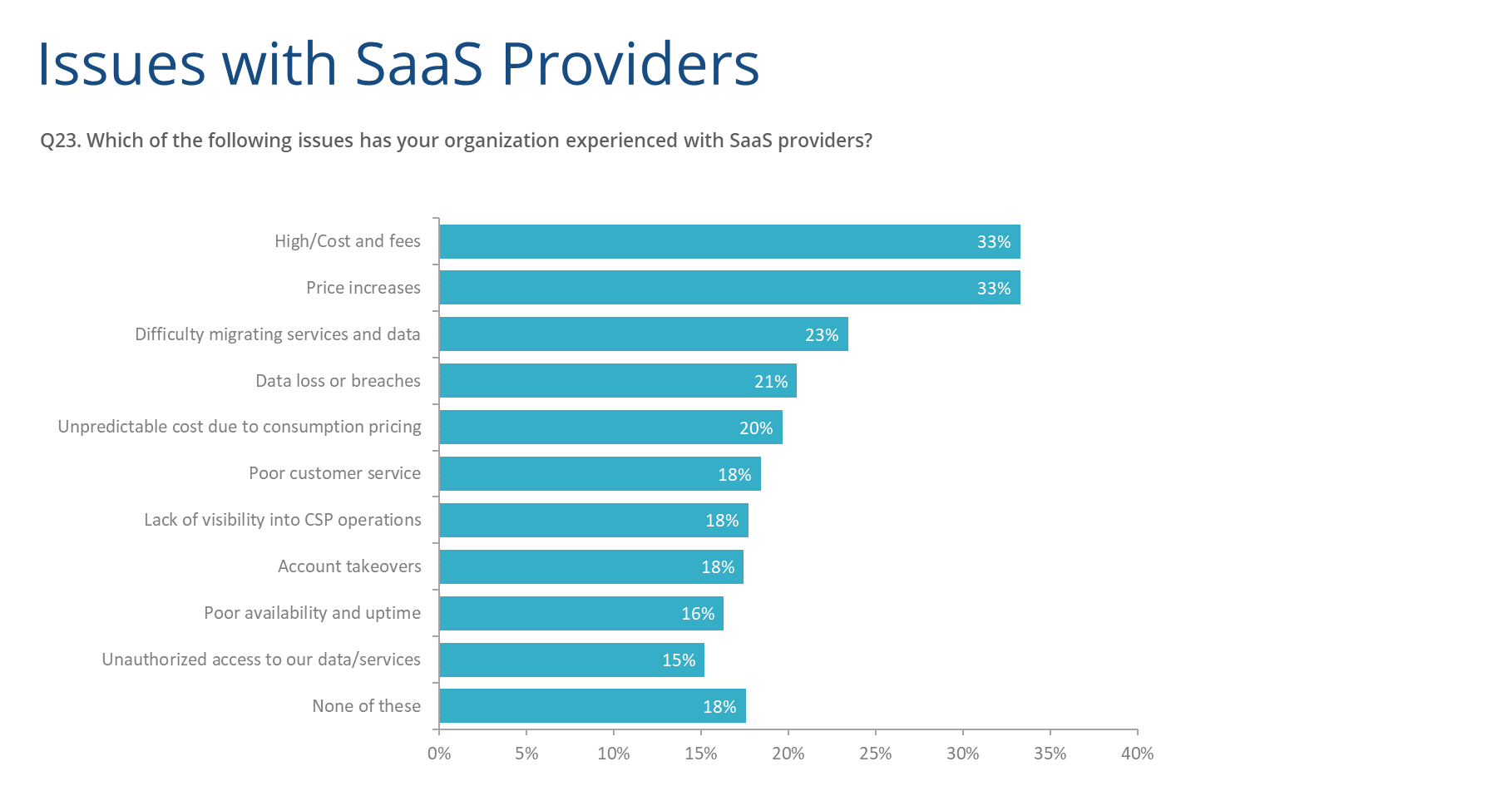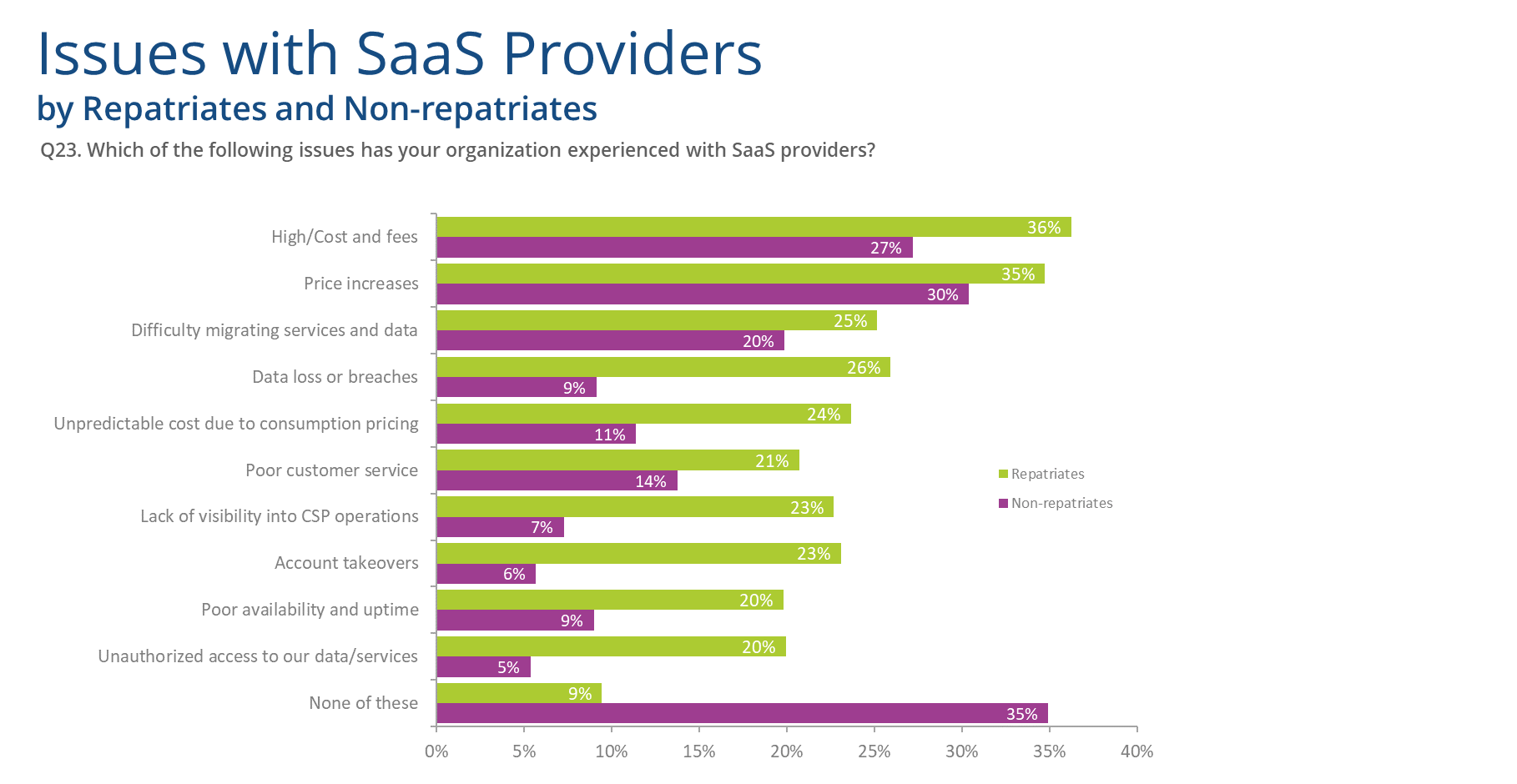The SaaS market has been growing at rapid pace for several years, and that momentum shows little sign of slowing. While the market is dominated by a small handful of large vendors, the long tail of the SaaS market is filled with many up-and-coming companies who demonstrate tremendous innovation, and as such, are experiencing staggering growth. From a SaaS buyer perspective, expectations continue to heighten surrounding what software vendors should, and ultimately must, provide if they want to survive over the long term.
Furthermore, AI, machine learning, IoT, and other soup de-jour terms have become commonplace in the marketing campaigns and product roadmaps of most application providers, further complicating what buyers need to assess and evaluate when purchasing SaaS. With increased competition and added complexity, its now more important than ever for SaaS providers to better understand what their customers and prospects really want, how they want to be “sold to”, and what their priorities are, so SaaS providers can properly set their strategic positioning and better craft go-to-market messaging.
IDC recently completed its world-wide survey of 3000 SaaS buyers, spanning 14 countries and several dozen industries. The survey product, known as IDC’s SaaSPath, is designed to capture three main objectives:
- Understand the Mind of the SaaS Buyer, including their wants, needs, fears, and priorities.
- Capture the SaaS Buyer Journey, including the processes, channels and metrics they use to make purchasing decisions.
- Evaluate the Performance and Reputation of SaaS Vendors, through extensive ratings of vendor effectiveness, advocacy, and customer loyalty by SaaS users around the world.
Insights from SaaSPath are used regularly in strategic planning and competitive intelligence groups at SaaS, PaaS, and IaaS vendors around the globe. Looking at this year’s SaaSPath results, 5 specific SaaS vendor traits stood above the rest in terms of SaaS buyer priorities, including:
- data security
- trusted brand
- value for the price paid
- high availability (uptime)
- ease of use.
While the last 3 on this list are well understood, there are some aspects of the first two that some organizations still tend to overlook.
The Importance of Data Security and a Trusted Brand
Data security is by far the most important attribute that SaaS buyers are seeking, and brand trust, which goes hand in hand with security, rates a close second. In a world riddled with data breaches, scrutinized policies around data privacy, and increasingly complex regulations popping up in countries around the world addressing data sovereignty, nothing is more vital to buyers of SaaS than their ability to wholeheartedly trust their SaaS vendor and feel confident in the data security they are providing. Interestingly, the focus on security, and buyer’s confidence in that security, does vary by industry and by geographical region.
For example, customers in the Oil & Gas industry today have the highest level of trust when it comes to their SaaS vendors’ data security, while those in the Media & Entertainment industry have the lowest level of trust. Likewise, trust levels in North America and APeJ today are significantly higher than those in Europe and Japan.
Interestingly, while IDC’s Industry CloudPath survey (a companion product to SaaSPath, focused on cloud adoption, maturity, and customer preferences) sees roughly 20% of organizations today having repatriated some application workloads from the public cloud back to either on-premises or to a private cloud, there is a strong correlation between those organizations who have repatriated, and those who have experienced some type of data security related issue with their SaaS vendor. Repatriation is significantly lower in those organizations who have not had any security issues and fully trust the security of their SaaS vendor.
The last thing an organization wants with SaaS are any surprises. Predictability is key, which is why that is one of the first things we ask customers about in our SaaSPath survey. As you can see below, roughly one-fifth to one-third of all organizations globally have experienced issues with their SaaS vendor, many of which were unexpected.

Price increases, unpredictable costs and fees, account takeovers, and poor customer service are just a few issues named that are increasingly common. But more concerning is the fact that 15% of organizations have witnessed unauthorized access to their data, and more than one-in-five organizations have experienced data loss or breaches with their SaaS provider. If we overlay those organizations that have repatriated applications away from the public cloud onto figure 1, it becomes glaringly apparent that repatriation, and ultimately lack of public cloud adoption, is directly tied to how well a customer trusts their vendor, and how many unexpected issues they have experienced with their provider.

Exceed SaaS Buyers’ Expectations
As we head into 2019, with cloud penetration in the applications space now surpassing 31%, and expected growth to continue surging at roughly a 20% CAGR for the next 5 years, it is very important that SaaS vendor take stock of not just what they’re doing right, but more importantly, what they’re doing wrong. The old adage of “the customer is always correct” rings true here and should not be ignored.
Results from SaaSPath paint a very clear picture about what customers want, how they want to be treated, what aspects of SaaS they value most (i.e. ease of implementation, integration, and use, etc.), how they want to buy (i.e. through which channels), what metrics will drive their investments, how they perceive the leading vendors in each market, and to what degree they feel affinity and loyalty to their SaaS providers. Sometimes success is really as simple as listening to what your customers want and saying “Yes”. The most successful companies over the next decade will be the ones that marry themselves to this philosophy.
Want to learn more about what buyers look for when evaluating SaaS? Read IDC’s new eBook, “The 5 Factors that Scare Away SaaS Buyers“:




